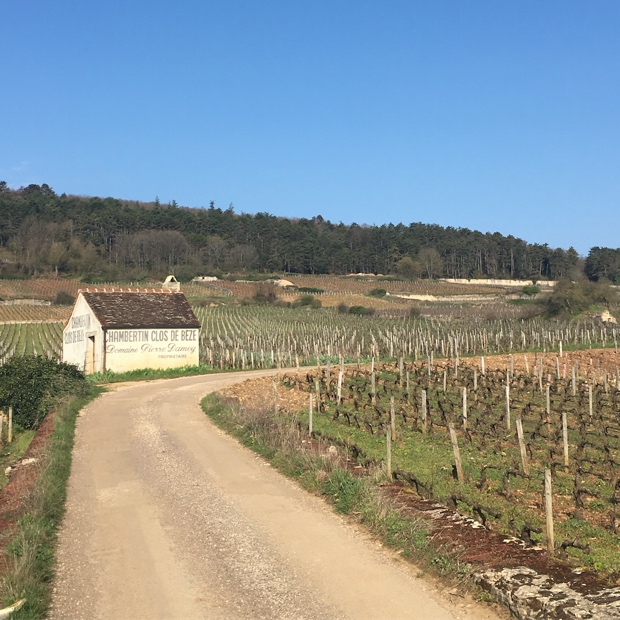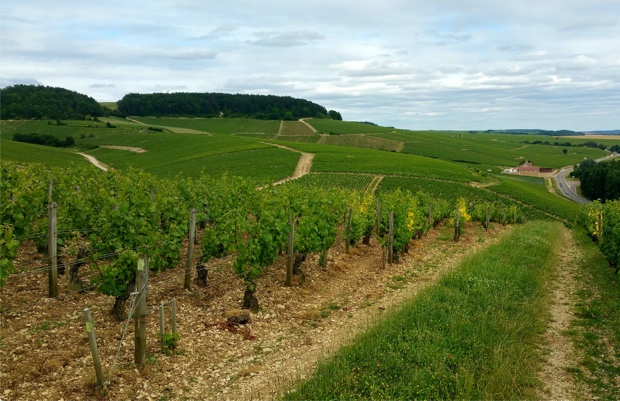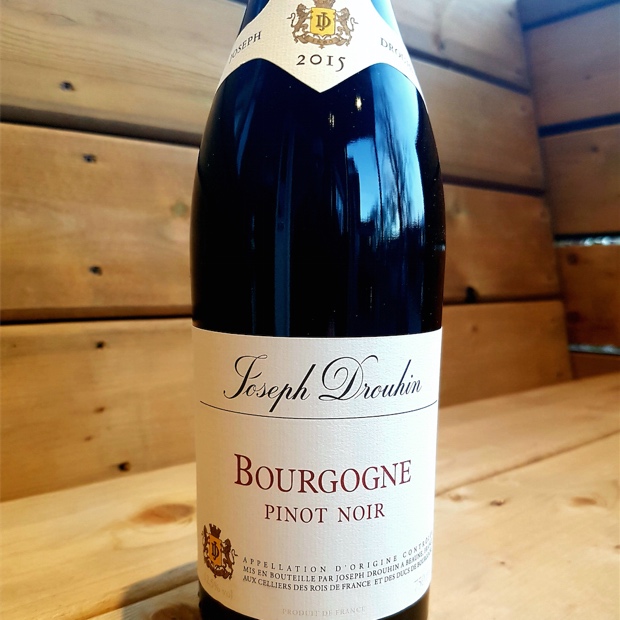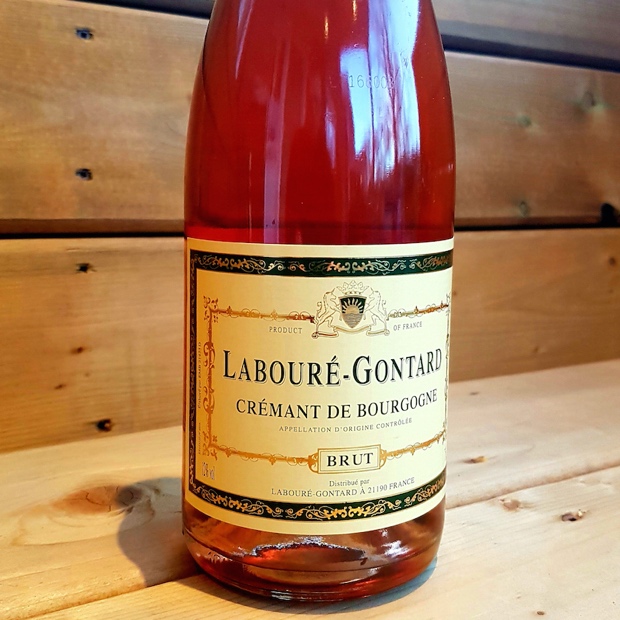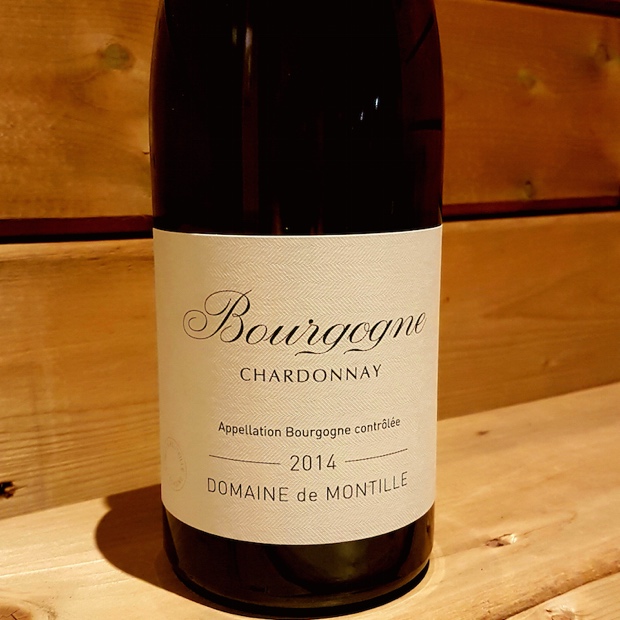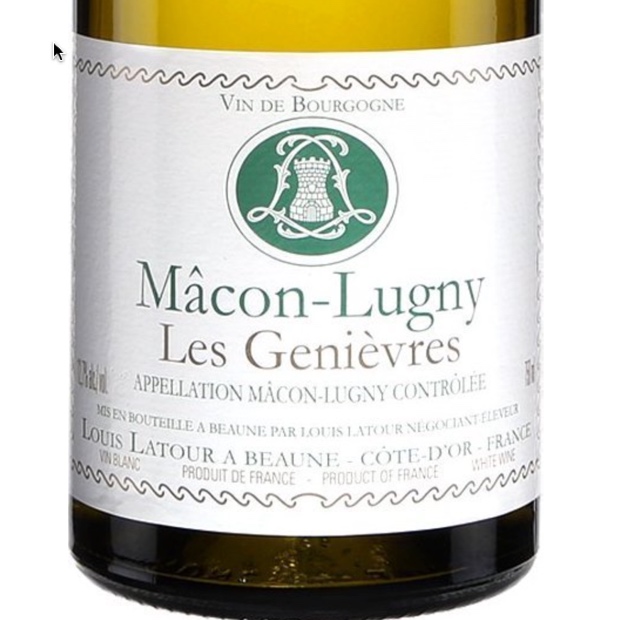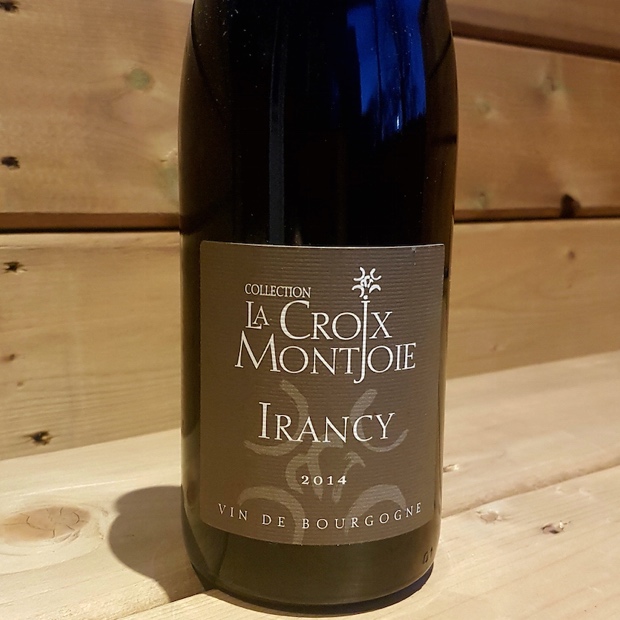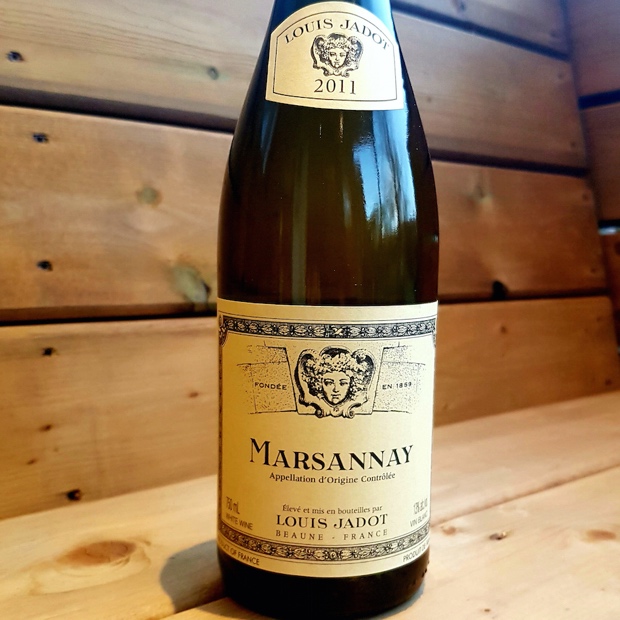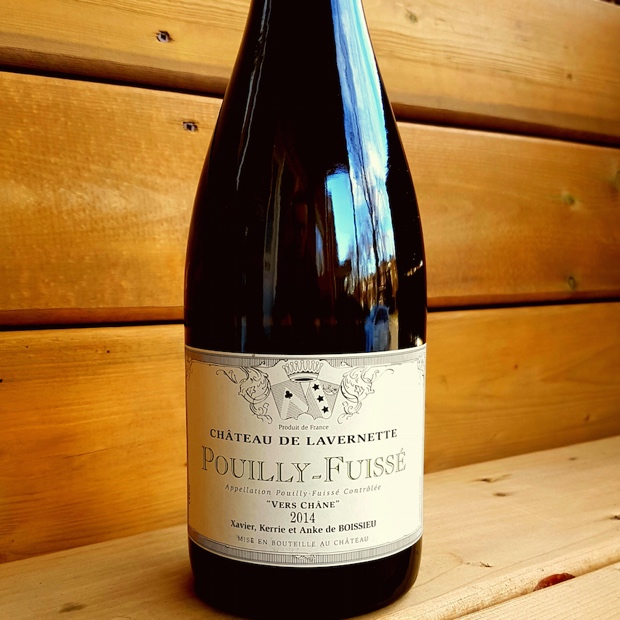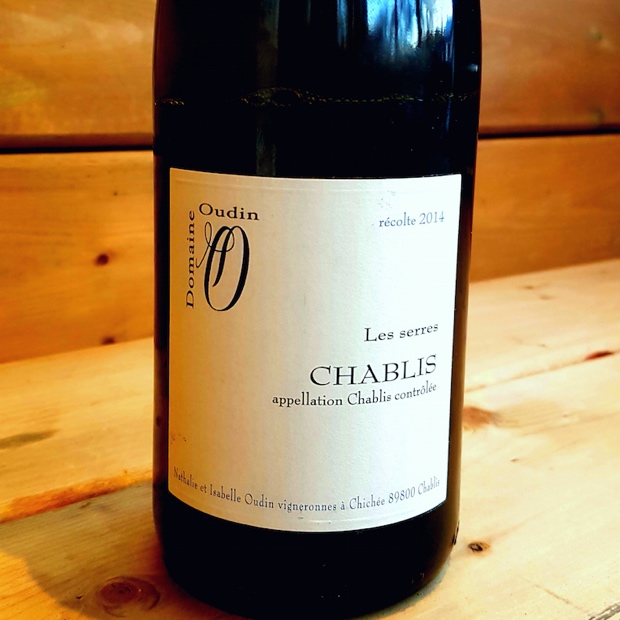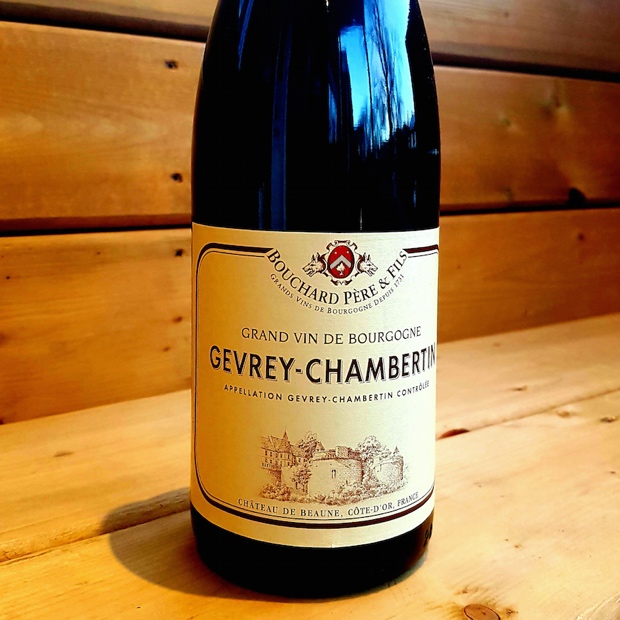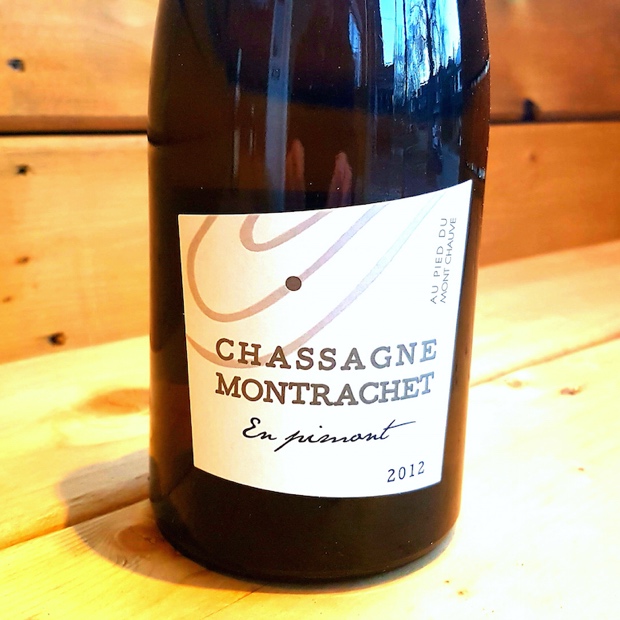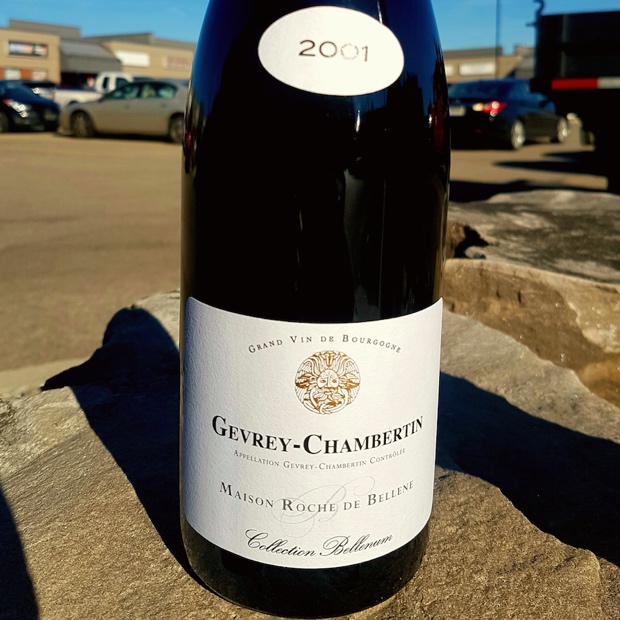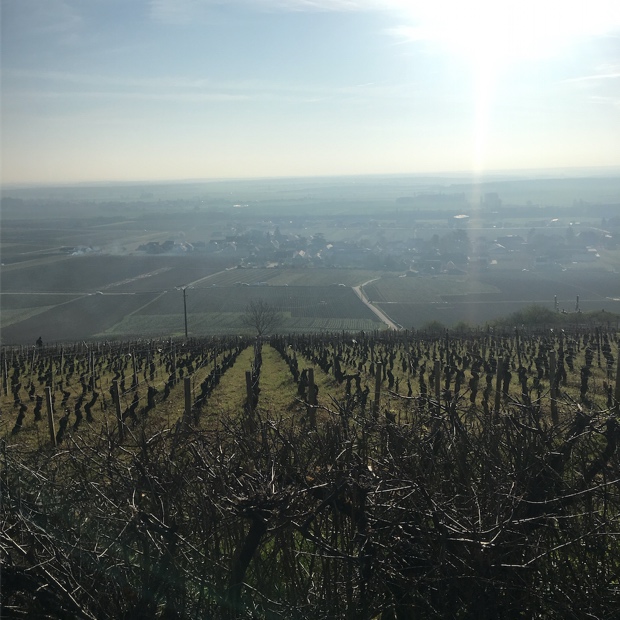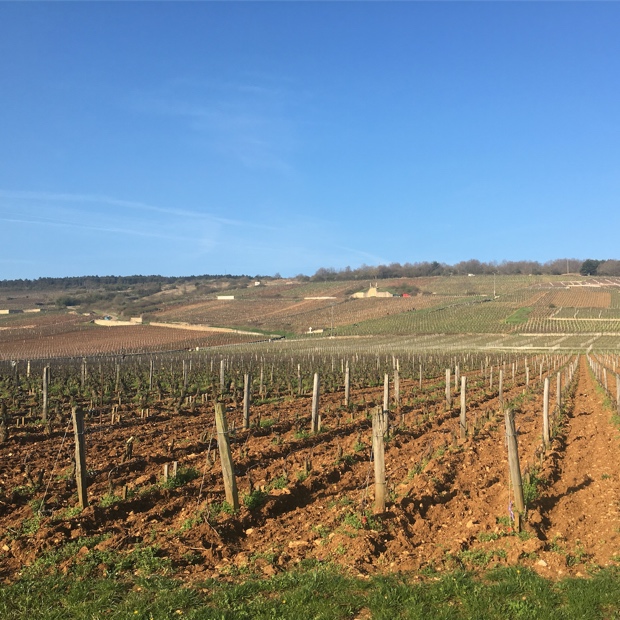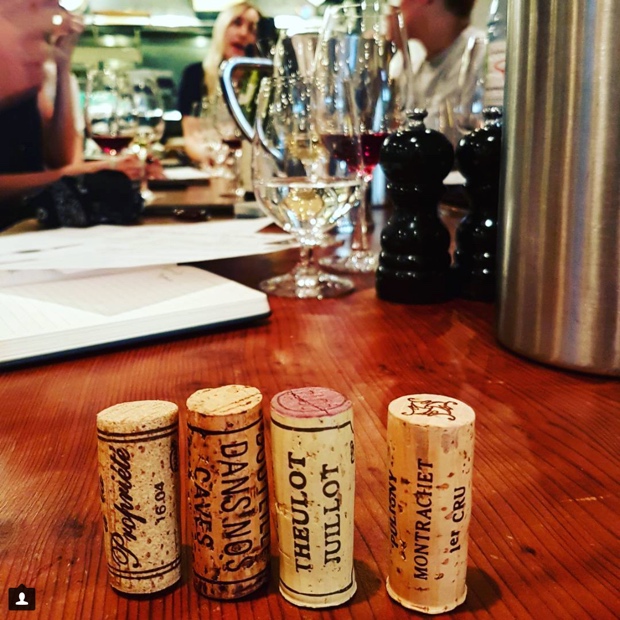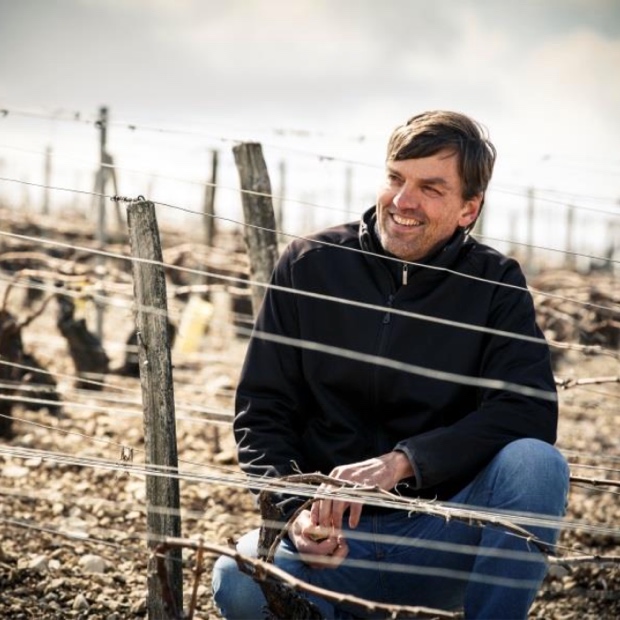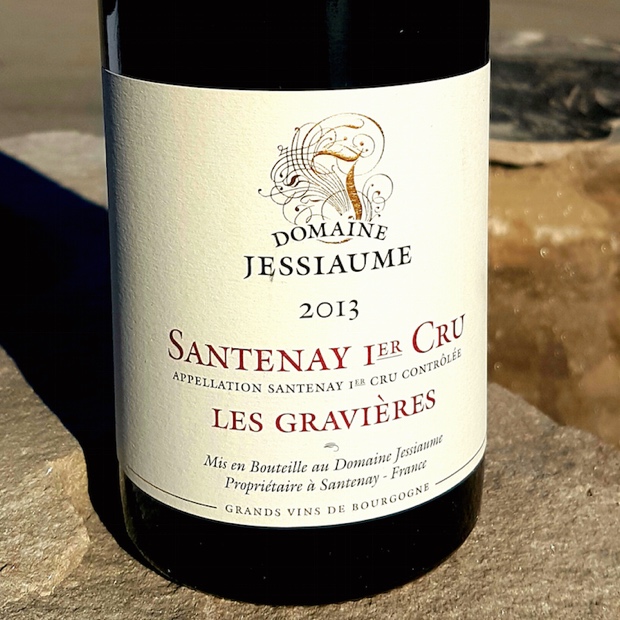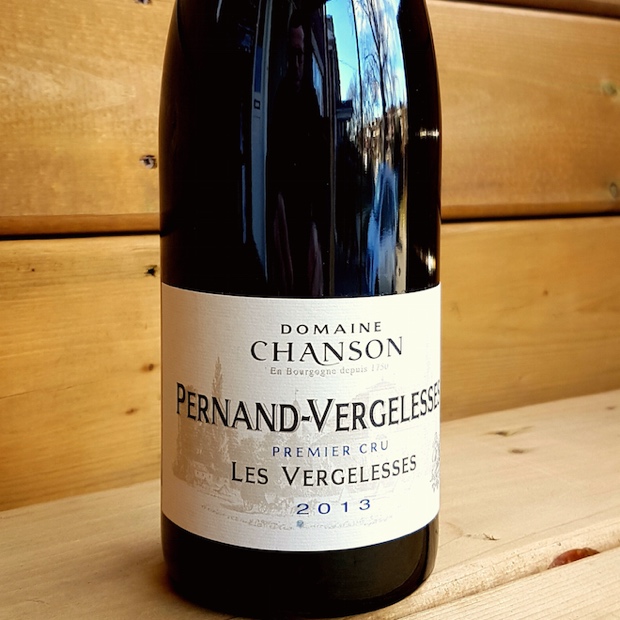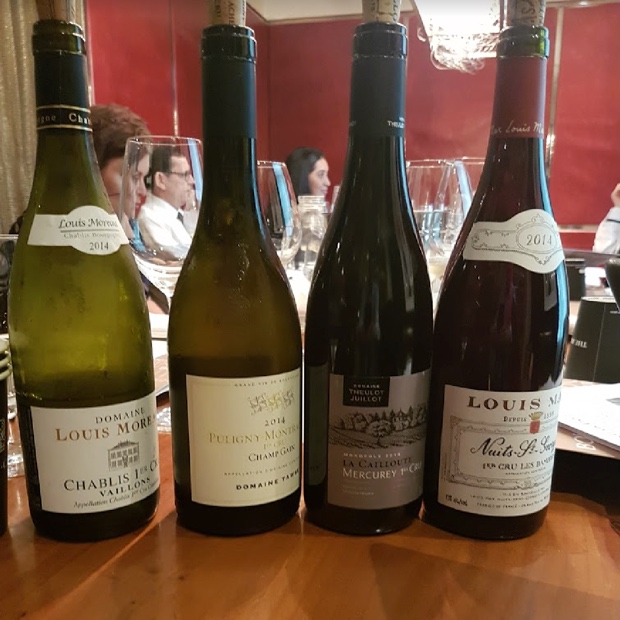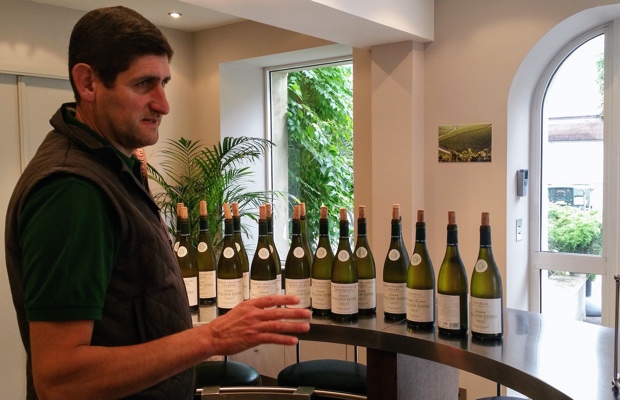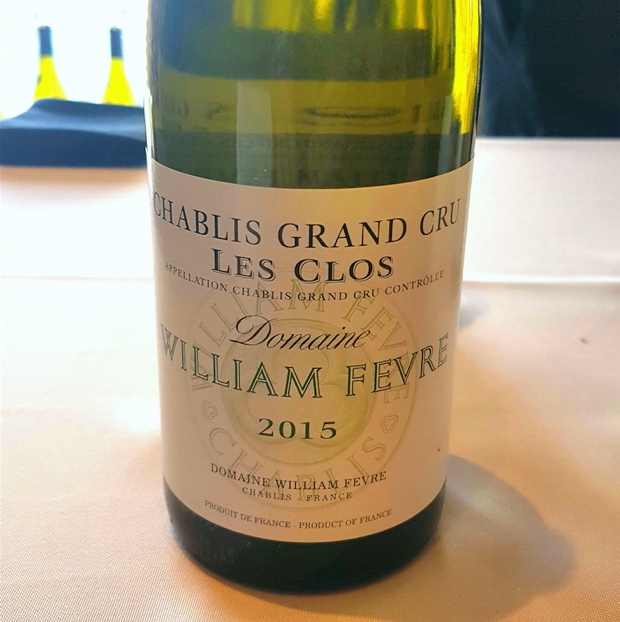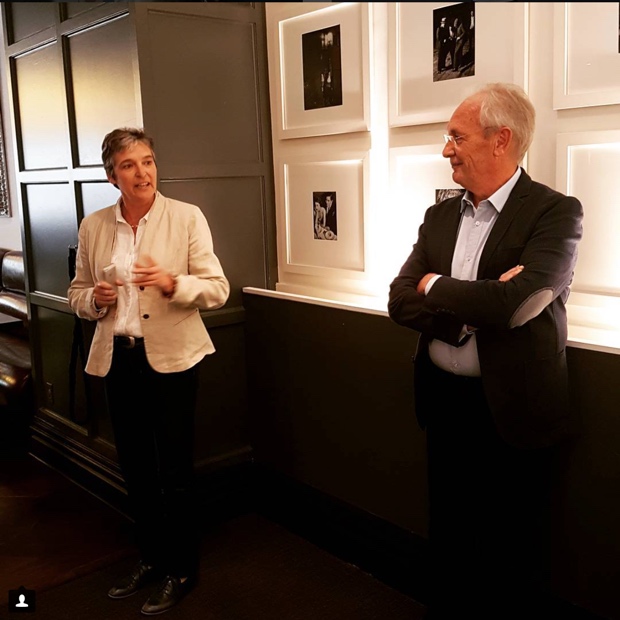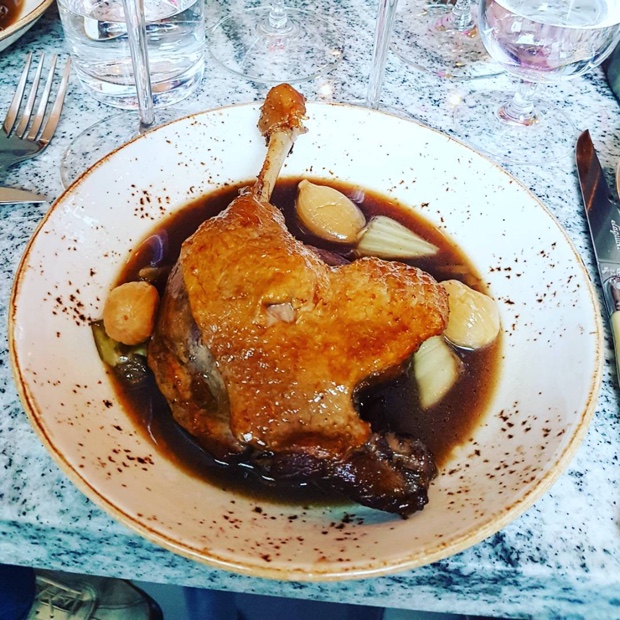Bourgogne is but a place built upon a word, of wines designed and articulated through their very own personal vernacular. The region’s most important vineyards are defined in a word, in summary and without comparison. Climat is the word and you may be shocked to hear how it is expressed as a highly complex chain of topographical, elemental and ethnological conditions. The glossary is much longer than you might think and adds up to quite a versatile declaration. To arrive at the distilled quotient of one, no less than 20 words are employed, exercised and ushered into explanation. The lineage travels through geography-geology-topography-landscape-position-relief-aspect-exposure-slant-elevation-slope-soil-vegetation-weather-microclimate-humankind-heritage-history-tradition-knowhow and temperament. While we understand the intellectual autonomy of choosing the unescorted word Climat as acting on behalf of all these conditions, what makes it so specific as to be exclusively owned by the people of Bourgogne?
It’s really quite simple. The people of Bourgogne coined the term or rather it came to them, as naturally as signs and portents but in the most positive, abiding and permanent of ways. Climat as in the Latin verbum sapienti, “a word to the wise,” meaning it stands alone, suffices, tells the whole story. Many will ask how many base and necessary conceits comprise this peerless notion that is Climat? The answer is not how many but that it belongs to the Bourguignons and no one else, so deal with it. Climat is the perfect oxymoron, a low and slow developed and yet truly miraculous occurrence, or perhaps a marvel but also forever etched in stone. It’s hard not to feel some trepidation when it sounds like preaching through a biblical voice because like the phrase that speaks to the Ten Commandments, the word implies that nothing else is as absolute and unalterable. In the case of Bourgogne it is owned because of 2,000 years of recorded history, thanks to the educated and the phrénique, of monks, farmers and intellectuals whose minds were connected to a feeling in the pit of their stomachs and to the earth below their feet. Climat keeps you, as it were, on your toes.
It’s hard to imagine one word separating something so complex, multiple and diverse from everything else. In the English language “word” can be commensurate with the phrase “I speak the truth.” Climat may or may not have one single meaning, but in this univocal part of eastern France it is used to convey a collective sense of geographical affirmation, acknowledgement and agreement. It may also indicate that some special place has impressed a group of agriculturalists, viticulturalists and consumers so favourably that they would emphasize it as fixed and unchangeable. Farmers and winemakers can try to do the same elsewhere in the world but good luck coming up with a name or a term as precise, succinct or possessive of some semblance of equal meaning as Climat.
“Les Climats sont des parcelles de terre précisément délimitées”
Precisely defined parcels or plots of land. Another way of seeking a definition is to take the what not to do or not to think approach. It insists that Climat should not be misinterpreted. The notion is unrelated to meteorology but is a specific term unique to Bourgogne, designating a specific vineyard site. Bernard Pivot writes “in Bourgogne, when we speak of a Climat, we do not look up to the sky, we keep our eyes to the ground.”
“Climat is the DNA of each wine
singuliers et multiples”
“Each Climat is a vine plot, with its own microclimate and specific geological conditions, which has been carefully marked out and named over the centuries. Each of them has its own story, produces wines with a distinct character and taste and keeps its own place in the hierarchy of crus (Regional Appellation, Village, Premier Cru, Grand Cru). Over one thousand named Climats extend along the 60 kilometres of the thin strip of vineyards running from Dijon to Santenay, just south of Beaune, and among them are some of the most famous names from the world of wine ; Chambertin, Romanée-Conti, Clos de Vougeot, Montrachet, Corton, Musigny…”
Bourgogne – Regional Appellations
It begins with the broadest of the Bourgogne appellations at the base of the pyramid with regional wines that are the rock and the platform upon which all Climats may stand. Included in this category we find Crémant De Bourgogne, Rouge et Blanc. I asked Laurent Drouhin of Domaine Joseph Drouhin “what does Climat mean to you?” His response. “First of all Climat is a name that is used exclusively in Bourgogne. A Climat to me refers to a specific location in Bourgogne which produces a wine with a unique character only found in that location. That is why in Bourgogne we highlight the name of the wine (Climat) more than the grape variety. I like to say there are thousands of Chardonnay produced in the world, there is only one Montrachet. A good example is the corner of four Climats which are next to each other and produce very different wines due to specifics in the soil and exposure. Montrachet/Puligny Montrachet Premier Cru Caillerets/Batard Montrachet, Puligny Montrachet Premier Cru Les Pucelles. Four fabulous wines, with incredible character and so different. Basically those four Climats are unique and vineyards are touching each others. Well, That is Bourgogne, That is Climat.” On his regional Bourgogne he told me this. “The Bourgogne Pinot Noir is a blend of several appellations from all over Bourgogne (around 13). So not a specific Climat. There is no vineyard designated as it is a blend of other declassified village level wines such as Macon Rouge, Ladoix, Maranges…. The wine is more of a melody which reflects the elegance and subtlety of the Pinot in Bourgogne.”
Joseph Drouhin Bourgogne Pinot Noir 2015, AOC Bourgogne (512574, $24.95, WineAlign)
Dive straight into the regional generalization of Bourgogne with Drouhin as the conduit and the driver. Here is where you initiate with all the usual suspects; red cherries, earth and herbs. Done and done, right and proper. Drink 2017-2019. Tasted November 2017 maisonjosephdrouhin philippedandurandwines @JDrouhin @Dandurandwines Joseph Drouhin Philippe Dandurand Wines
Cedric Dechelette is the General Manager of Maison François Martenot, the company that includes Négociant and estate owner Moillard, along with sparkling wine producer Labouré Gontard. Dechelette has been involved in the Bourgogne wine trade for over 30 years.
Labouré Gontard Brut Rosé Crémant De Bourgogne, Traditional Method, AOC Bourgogne (460816, $20.95)
This blush Crémant is a blend of chardonnay, pinot noir and aligoté. The base wines of the Crémant come from the different subdivisions of the Bourgogne vineyards. Their base wines however are predominantly produced from the vines of the Côtes and Hautes Côtes of Beaune and Nuits and the Côtes Chalonnaise. Different soils confer from limestone and marl in the Côtes de Nuits, Côtes de Beaune and Côtes Chalonnaise and granite in southern Bourgogne. The combing of Bourgogne from north to south delivers a true amassed regional expression for Bourgogne AOC, including such a broad, proper and creamy full Crémant like this Labouré Gontard. Feel the texture of layered terroir and note the blush citrus in its precise acidities. Drink 2017-2019. Tasted November 2017 lgcf_paris hhdwines @HHDImports_Wine Les Grands Chais De France H.H.D. Imports Inc.
Domaine De Montille Bourgogne Blanc 2014, AOC Bourgogne (515692, $50.00)
Bourgogne Blanc was never so ambitious, Climat-driven, sober and meditative as this from first Hubert de Montille and today, son Étienne. From toy to bona-fide Bourgogne business, Montille takes regional purpose to the highest level it can afford and with the quest to age. The goal is set for complexity and tertiary aromas, whether Bourgogne AOC or Volnay Premier Cru Taillepieds. This Blanc is so very primary and even herbal, with a specific Bourgogne garrigue, owing to the presence of holly, a thorny scrub bush. The stuff is found in the Beaune vineyard Les Aigrots, from an old dialectical word, “Argifolium.” Texture is viscous, salve-like and peculiar as a result but nothing seven to 10 years couldn’t resolve. The sharp acidity would say the same. If drinking anytime soon it would be a good idea to decant. Drink 2020-2029. Tasted November 2017 domainedemontille @2Montille Domaine de Montille
Bourgogne Village
The last example causes some wonder as to what may lay between regional Bourgogne AOC and Village level wines. Decanter Magazine just recently reported the announcement by the BIVB that there is in fact a new level of Bourgogne wines coming soon. The new Bourgogne Côte d’Or was inaugurated in Beaune just this past weekend and will be integrated as a Bourgogne Régionale AOC, not exactly a new appellation but it is the 14th regional Bourgogne AOC. Regulations will dictate vine density (9,000 plants per hectare as opposed to 5,000 at the regional level) and only Pinot Noir grapes can be used for the reds, from vines grown across all villages of the Côte de Beaune and Côte de Nuits, from south of Dijon to Maranges. Producers will be able to include grapes from young vines that would not necessarily be used in Village level wines. Prices should fall somewhere in between regional and Village and the new category “should be seen as the top of the regional pyramid, just below Village level,” according to Cécile Mathiaud of the BIVB.
Meanwhile long before the wine there were three geological phases; Quaternary, Tertiary and Jurassic, to set the landscape. During the latter period a shallow tropical sea covered what today is France. Major limestone and clay deposits were formed in a variegated mix that generally speaking runs from harder and more prevalent deposits (in the north) to friable, less regnant and heavier clay (in the south). Today in addition to Pinot Noir and Chardonnay there are Gamay and Aligoté. In Saint-Bris there is Sauvignon Blanc and in Irancy Pinot Noir can be blended with César. The investigation into this essential level of Bourgogne travels in and out of many hamlets and the precisely delineated vineyards associated with the parent village. A Climat is located in the Mâconnais, an outlier is found in Irancy, a not so common white in Marsannay, and an allowable lieu-dit noted on the label in Pouilly-Fuissé. More Village AOC examples are found in a Chablis of a Climat that is essentially Premier Cru, one of the best villages of the Côte de Nuits and the aforementioned Montrachet.
Louis Latour Mâcon Lugny Les Genièvres 2015, AOC Bourgogne (Agent, $23.95, WineAlign)
Latour’s lieu-dit Les Genièvres is a warm, rich and distinctly Mâconnais chardonnay, even in its surprising depth and richness for the appellation, coupled with the warmth of the vintage in delivery of terrific value for the money. Bourgogne for all the right reasons, most of all a food happy way to get satisfaction from and with chardonnay. Drink 2017-2020. Tasted October 2017 louislatour1797 markanthonyon @LouisLatour1797 @MarkAnthonyWine MaisonLouisLatour @MarkAnthonyWine
Domaine La Croix Montjoie Irancy 2014, AOC Bourgogne (269414, $35.95, WineAlign)
From the outlier for pinot noir in Bourgogne, only Irancy tastes like this and carries such linear, in your face, interfaced structure. Irancy is found in the Grand Auxerrois region, on the right bank of the Yonne river, fifteen kilometres South of Auxerre and South-West of Chablis. Domaine La Croix Montjoie was created in 2009, named after a cross located at the intersection of Vézelay and Tharoiseau. This cross signals the spot where pilgrims coming from Avallon first caught sight of Vézelay and felt overjoyed. The domaine is led by a Bourgogne dream team; Sophie and Matthieu (agricultural engineering and oenologist), Thierry and Jean-Louis (farmers), Christophe and Hervé (vineyard workers). Their Irancy is firm, properly and effortlessly acetic in its rising tones. It’s dramatically bright, ripe, veering to darkening cherry and exhibits great tension. While tart, slightly lactic and quick to the punch it’s also peppery and crunchy. This northern pinot noir is blended with césar, a deeply hued variety of only five planted hectares in the Irancy appellation. It is said to have been brought to the area by the Roman legions. Mostly (75 per cent) aged in tank so the freshness steals the show with just enough structure to see five more years of firm pleasure ahead. Drink 2017-2022. Tasted several time May to October 2017 #domainelacroixmontjoie beauwinespiritsake @davidbeauroy Domaine La Croix Montjoie – Vins de Vézelay
Jadot’s winemaker Frédéric Barnier shed some fascinating insight on how he and his team deal with many different parcels. “As you know we are producing a large range of wines and are really focused on trying to reveal each place. To explain better we are trying to have the same process from a Village to Grand Cru (same ageing same cask same percentage of new oak). We want to show that a Meursault is not a Marsannay and not because we have made something special on the wine but just because they are different. For the Marsannay White, this wine is coming from a blend of three different plots we are farming. One of it is planted with Chardonnay Rosé which is pink but it lost the color after fermentation. It is a rare wine from Côte de Nuits. Most of Marsannay is red or a few rosé. 2011 is showing very well now. Whites are rich but still fresh from an early vintage picked on the very first days of September.”
Louis Jadot Marsannay 2011, AOC Bourgogne (522136, $41.95, WineAlign)
The rare and elusive Marsannay blanc is a fine and beautiful thing, laden with dry extract, intense grape tannin and the pure intensity of liquid limestone. It is here in this wine from the northernmost commune of the Côte d’Or where the idea of fruit and of chardonnay is just an afterthought because the sheer and non-mitigating saltiness of this stony Bourgogne is simply hypnotizing. This is a steal of great Village proportions. I would stack this up against many Premier Cru two and three times its price. Drink 2018-2025. Tasted November 2017 louisjadot halpernwine @ljadot @HalpernWine Louis Jadot Halpern Wine
Kerrie de Boissieu, Oenologue at Château de Lavernette explains that “Climat is a vineyard designation. It is the custom in Bourgogne to give names to parcels. Today, those names mean very little to us personally but they do allow us to compile a history for each parcel and follow it better. We have Pouilly-Fuissé vineyards in two different Climats: Maison du Villard & Vers Châne. There is no one named Villard in this area now and I don’t know where their house is or why the parcel carries their name. The parcel faces west – southwest so it captures the afternoon sun making it a more luminous wine – cheerful and easily approachable. Vers Châne means “towards Châne” The parcel faces east – southeast capturing the morning light. It is a colder, stonier, more complex mistress that needs to be coaxed to cooperate. It is well worth the trouble though as it has a nicely chiseled structure and ages gracefully.” I asked Kerrie to comment on Château De Lavernette Vers Châne Pouilly Fuissé 2014, the wine and the vineyards. “This wine has always been our chouchou (favorite). Xavier and I bought the vineyard in 2007. It belongs to us and not to Château de Lavernette. The first time we harvested the grapes was the day our son, Basile, was born and it made for a really exciting day. There are two parcels divided by a row of peach trees (peches des vignes). It is in an amphitheater protected by a forest on the northern side. The soil is a rocky scree with limestone tumbling down from Les Rontets. The wine seems to be marked by each of these elements: peach blossom, stone fruit, woodsy underbrush and saline minerality. Hand-picked, whole-cluster pressed, indigenous yeast, fermented and aged in Bourgogne oak barrels (228 L, 20% new) for 22 months.
Château De Lavernette Vers Châne Pouilly Fuissé 2014, AOC Bourgogne (496372, $42.95, WineAlign)
The lieu-dit locale for Lavernette’s Pouilly-Fuissé is called “Vers Châne,” a chardonnay that might mean “down a silk road.” This is in fact a true expression of polished texture, a Pouilly-Fuissé warm and rich if decidedly linear-focused, with some real vanilla-tinged, toasty barrel notes. That the appellation speaks most truth when the combination of ripeness and smoulder are mixed and then married to the specific PF acidity (like preserved lemon), then reality bites. The smoky, flinty edge is a little over the edge but two years should help to soften, match with the downy texture and ultimately settle the score. Drink 2018-2021. Tasted August and November 2017 #chateaulavernette @NaturalVines Château de Lavernette
Domaine Oudin Chablis Les Serres 2014, AOC Bourgogne (WineAlign)
Just south of Chablis there are hilltop vineyards above and around the village of Chichée where Les Serres draws its superior fruit for what is ostensibly (though not labeled as such) Premier Cru. Jean-Claude and Christiane began here in 1988 and it is now Nathalie and Isabelle who use Les Serres old vines fruit (some up to 70 years) for this transcendent and worthy Chablis. Les Serres are “the greenhouses,” an apropos moniker for a wine that not only receives but gifts so much warmth and generous fruit without ever straying from its stony and salty roots. The texture here is above and beyond textbook for Premier Cru and elevated for the sharp vintage. So settled at this point it is just a pleasure to taste. Drink 2017-2026. Tasted November 2017 #domaineoudin vinsdechablis @purechablis #domaineoudin
When I asked Luc Bouchard which Climat most defines the notion for the estate he replied “from Bouchard estate we are very proud of the Climat of Beaune Grève Vigne de l’Enfant Jésus, monopole of Bouchard since 1791, a unique terroir with gravely soil (unique in Beaune ). The roots go very deep into the soil (9 m), so if we have a very dry summer there is always enough water far below and if there is heavy rain storm, the drainage is so good that the water is not directly swallowed by the grapes. That explains the consistency of the wine, it’s unique texture and ageing potential.” On his Gevrey Chambertin 2015 he had this to say: “The 2015 vintage is a superb vintage; normal quantity and high quality from Bourgogne generic up to top Grand Cru. Gevrey is one of the best villages of the Côte de Nuits and our sourcing of grapes come from four different growers (from different locations too) that allow us to have a better representation of the appellation and a better balance. Gevrey 2015 shows a deep and intense garnet red colour, intense bouquet red fruit and a touch of gamey taste. Good structure and very nice balance, ripe tannins, with a long finish. Can be drunk from now (with good aeration before) and can be aged for five up to 10 years.”
Bouchard Père & Fils Gevrey Chambertin 2015, AOC Bourgogne (661330, $59.95, WineAlign)
Bouchard’s 2015 is incredibly forward Gevrey Chambertin, full of fruit, flowers and a beautifully integrated red liquid chalky syrup. It’s just plain getable and is the godfather to all of its peers. If you want to show the world and everyone in it who knows or knows nothing about high-level Bourgogne then perhaps consider this to be the journey’s departure point. Gevrey and especially in the hands of Bouchard is such a gate for what it means to build pinot noir from the earth upwards. It explains what needs in a language you can understand and makes an offer you can’t refuse. Pour this every day simply because it is quintessentially ripe and structured stuff. Drink 2018-2026. Tasted April and November 2017 bouchardpereetfils woodmanws @BouchardPere @WoodmanWS Bouchard Père & Fils Woodman Wines & Spirits
Mont Chauve En Pimont Chassagne Montrachet 2012, AOC Bourgogne (496372, $67.95, WineAlign)
Still in a state of hyper reductive possibility this is an ambitious and beautifully calcareous Chassagne, full of deep lemony preserve and variegated waves of acidity. Though it breathes of some age development it is in fact a greatly structured chardonnay that will continue to benefit from further development. Where texture and complexity meet. Drink 2018-2024. Tasted October 2017 aupieddumontchauve #BNDWines Au Pied du Mont Chauve Devon Masciangelo
In addition to running his own Domaine de Bellene and négoce Maison Roche de Bellene, Nicolas Potel has drawn upon some secret resources to deliver old wines made new again. His sourcing of older parcels from producers who somehow hid these top vineyard gems from the world is a gift of generous proportions. Ask Nicolas what he thinks about Les Climats and the hardest working man of leisure, diplomat and ambassador extraordinaire for the wines of Bourgogne will open up his heart and his mind. Says Potel, “the characteristics and Climats of every site and village are truly unique. To make a very good village wine, you need to ideally source grapes from south, central and northern areas of the village. This way it shows the full expression of the village for the vintage in question. Single vineyards based on identification of one site. Volnay is all about elegance. Nice tannin, structure and acidity with pure fruit character. The terroir in Volnay is always very transparent in the wine because of this elegance. What about Gevrey-Chambertin? Last February I tasted the 1999 Village and 2001 Premier Cru Petit Chapelle and today, the ’01 Village. Immediacy meets reflection to bring clarity into the light. This is a wonderful example of the beautiful relationship between producer, Village and Climat.
Roche De Bellene Gevrey Chambertin “Collection Bellenum” 2001, AOC Bourgogne (514430, $74.00, WineAlign)
Though time has exorcised some fining away of the more grainy and delicate texture of this Village level Gevrey Chambertin it hangs securely in the balance between youthful and aged. As a lovely mature pinot noir it should be considered as occupying space in the categorical order between Village and Premier Cru, once destined for greatness but now in the waning, twilight of its career. What happens in this space is a complex combination of cured red fruit, weighty earthiness, mushroom, truffle and dried herbs. All merely hints mind you so several years of life will persist to deliver further pleasure. Drink 2017-2021. Tasted November 2017 domaine_de_bellene nicholaspearcewines @RochedeBellene @Nicholaspearce_ Bellene Nicholas Pearce
What is Climat?
Our fiends at the Bureau Interprofessionnel des vins de Bourgogne (BIVB) have established the reference point for the written understanding of the true meaning of Climat. I posed the question of concept to several producers and négociants. Most pointed straight to the BIVB website for answers “Over the past 2,000 years, the Bourgogne winegrowing region has benefited from the experience of men and women, from the observation of the soil, and from the region’s unique microclimates. This has given rise to a patchwork of plots whose qualities have been identified and acknowledged: the Climats and lieux-dits. The Climats and lieux-dits give Bourgogne wines their unique identity. Their names bear witness to the region’s rich history. Their origins lie in the environment, local heritage, savoir-faire (know-how) and human history. The term Climat is unique to Bourgogne. It is the Bourguignon expression of the notion of terroir.”
“The Climats and lieux-dits are the ultimate expression of the notion of terroir. They guarantee the unique characteristics of each wine and offer an unrivaled taste experience. Climats are precisely delineated plots of land that enjoy specific geological and climatic conditions. When combined with human effort and translated through the two great Bourgogne varietals of Pinot Noir for reds and Chardonnay for whites, they give rise to an exceptional range of appellations that are classified according to quality and which enjoy international renown. The Climats confer their own unique organoleptic qualities onto the wines of Bourgogne, such as their appearance, aromas, flavours and texture.”
“exceptional range of appellations that are classified according to quality and which enjoy international renown…the result of the alchemy between men and women and the natural world”
“Some Climats were first referenced as far back as the 7th century, such as Clos de Bèze in Gevrey. For centuries, the reputation of Bourgogne wines was driven by the monks of Cîteaux, and then by the Dukes of Bourgogne. Some wines, such as Clos Vougeot and Montrachet, which bore the name of the Climat where they were grown, acquired a reputation that extended beyond French borders. In 1935, the National Institute for Origins and Quality (INAO), made official the usage of the word “Climat” and began using it in legal texts applying to all Bourgogne appellations, whatever their level of hierarchy. The Climats are a sign of excellence and on 4 July 2015, the Climats were included on the UNESCO World Heritage List. Lieux-dits are also plots recognized for their own topographic or historical specificities. Their precise geographical location is not registered by the INAO. A certain number of producers choose to feature the name of their lieu-dit on their labels, such as Pouilly-Fuissé, Le Clos Reyssié.”
Bourgogne Premier Cru
Les Climats are Appellation d’Origine Contrôlée (AOC) defined vineyards or rather the DNA of the vineyards and the official term is specific to wine while the reference lieux-dits is an administrative one. While there are some who consider Climats as also relating to things atmospheric, the pragmatic consensus keeps the discernment ground into dejection depressions, alluvial fans and geological anomalies in an otherwise south by southwest set of exposure slopes for the best of Bourgogne wines. Still others would argue that while dirt makes an impact it is climate that inflicts the most drama on a wine but even more important than climate and soil, it’s the people who give the terroir its cultural identity. The notions of accumulate knowledge that can be transmuted from generation to generation is how each village has managed to produce a specific style of wine from vintage to vintage.
Domaine Theulot Juillot Mercurey Premier Cru La Cailloute 2014, AOC Bourgogne (473793, $31.75, WineAlign)
Theulot Juillot’s is a Mercurey Premier Cru with a direct connection between Bourgogne and Ontario by way of the great region’s educator and ambassador Jean-Pierre Renard. Given and extra year in bottle the form tannic grip has loosened, if only a lace or two while it continues to match fruit with umami. Persists in its display as one of the more over-performing reds from one of the most out performing villages in all of Bourgogne. Last tasted on several occasions, June-October 2017
From vines planted in 1979 and 1980, the crest of the ridge at 300m is a prized locale in Mercurey that sees fit to fresh, vibrant and structured pinot noir. The beautiful dichotomous relationship between ripe and juicy opposite firm and sweetly tannic is met in this functional Mercurey, a Premier Cru of upbeat excellence. Very representative of place because of the grip but it goes light years beyond the lithe and the under-performed. You could pour this for Burgundy label chasers and they would cry sweet Nuits St. Georges. Raspberry and strawberry with plenty of umami minerality and that firm tannin up the back. Really tempurpedic acidity never reacts and always supports. Theulot Juillot may suggest five to eight years of cellar time but this is a 10-15 year Mercurey. No fooling. Drink 2018-2029. Tasted September and October 2016 #domainetheulotjuillot #domainetheulotjuillot Jean-Pierre Renard
Louis Moreau studied oenology-viticulture at Fresno State University (California) before working in several vineyards across the state. In 1994, after eight years in the United States, he returned to France to take over the family business, succeeding his father Jean-Jacques. He then expanded his facilities to leverage the harvests yielded on 110 hectares comprising the family’s two estates, namely Domaine Louis Moreau and Domaine de Biéville. Today, Louis Moreau produces and markets Petit Chablis, Chablis, Chablis Premier Cru and Chablis Grand Cru, with a focus on finding the best quality and respecting the environment. Since February 2016 Moreau has been the Vice-President, Commission Chablis of the Bureau Interprofessionnel des Vins de Bourgogne.
Domaine Louis Moreau Chablis Premier Cru Vaillons 2014, AOC Bourgogne (124362, $43.00, WineAlign)
Vaillons is drawn from sub-appellative blocks in Les Epinottes and Roncières, with some vines as old as 65 years and yields quite low for where concentration trumps quantity. Very rich and concentrated is indeed the mode here, with good mineral bled from stone and very little in terms of sour or lactic edges. This is amenable Vaillons to be sure. A purity subsists and solicits simple and non-specific pairings, like Dorado, Sea Bass or Magret de Canard. There is this amazing salinity that hints at iodine, lemon and lime, but I would not call it salty. I would call it really refined Chablis. Drink 2017-2022. Tasted July 2016 and several times May-October 2017 chablislouismoreau louismoreauchablis artisanal_wine_imports @MoreauLouis1 Louis Moreau @artisanalwineimports
“The word Climat is from Bourgogne and designates a viticulture terroir,” explains Megan McClune, Directrice at Domaine Jessiaume. “It is a certain piece of land, with vines, that is named, has a story and specific geological and climate conditions. The Climat is the association of land, grape variety and craftsmanship. We strive to produce all of our wines so that each wine expresses where it comes from in the glass. We produce three wines from one parcel of land in Auxey Duresses les Ecussaux. This definitely expresses the notion of Climat. Santenay Premier Cru Les Gravières is a very special piece of land. We have a history of over a hundred years in this piece of land. The soil is quite rocky and produces a wine with a peppery finish year in and year out.”
Domaine Jessiaume Santenay Premier Cru Les Gravières 2013, AOC Bourgogne (487488, $50.00, WineAlign)
Built in 1850, Domaine Jessiaume was purchased in 2007 and is owned and operated by the Scottish family Murray. Situated right at the gates of the important Côte de Beaune village of Santenay it comprises 37-plus acres, with large plots in Santenay, holdings in the Premiers Crus Auxey Duresses Les Ecusseaux and Volnay Les Brouillards and a section of Beaune les Cent Vignes vineyard. Les Gravières is located at the northern end of the village, on the border with Chassagne-Montrachet. Jessiaume are indubitably Santenay specialists and the famous limestone, oolite and marl plot of Les Gravières (to which a new wall was recently added at its base) is interpreted beautifully bright, from cherry tones to cherry strength. The mesoclimate is fully realized in this sunny ’13 and the wine represents the heart and meat of Bourgogne, from that textbook bright fruit and back down to earth. It’s taut and nearly bracing, just a perfect example of a very specific and storied Climat. Drink 2018-2025. Tasted March and November 2017 domainejessiaume beauwinespiritsake @DmneJessiaume Domaine Jessiaume
Domaine Chanson Pernand Vergelesses Premier Cru Les Vergelesses 2013, AOC Bourgogne (227199, $66.95, WineAlign)
South of the hill of Corton is where Chanson owns five-plus hectares in Vergelesses, the most famous Premier Cru that gave its name to the village of Pernand. You can feel the lower slope heavy clay but also the upper stones, first in power, grip and texture and then through a liquid red chalky streak. Pernand from the Celtic, “the (spring) source that is lost” and Vergelesses from the Middle French verge, meaning “rod,” a reference to the parcel’s long shape. It is a name which dates back to when Charlemagne owned vines on the Montagne de Corton. Just coming into its zone around now after the toast, grilling notes and calculous grittiness have begun to soften and fade. Drink 2017-2022. Tasted February and November 2017 domainechanson @domainechanson Domaine Chanson John Hanna & Sons Ltd.
Domaine Louis Max Nuits Saint Georges Premier Cru Les Damodes 2014, AOC Bourgogne (469080, $94.00, WineAlign)
Here is an outsanding Nuits Saint Georges from a marl and limestone vineyard just a stone’s throw from Vosne-Romanée. Les Damodes sings a northern NSG song and its ladylike name carries a legend that tells of fairies inhabiting the rocky landscape. The formations looked like tall ladies in long dresses, “les dames hautes,” or “damaudes,” then “damodes.” The vines in the furthest northeastern block north and east of the village look to the east and the soils are poor so the expectation elicits a thoughtfulness to solicit tension and finesse. That it does, first from a stony-lime-pomegranate-red cherry purity and then a fineness of acidity meets tannic honesty. Domaine Louis Max holds widely in Bourgogne, in Mercurey and Rully, as well as the south of France estates of Château Pech-Latt in Corbières and Domaine la Lyre in Côtes-du-Rhône. Les Damodes is a perfect example of a larger, modern-day producer making a small, site-specific Premier Cru from a storied piece of land. Drink 2018-2028. Tasted several times, May to October 2017 #domainelouismax Louis Max
Marchand Tawse Puligny Montrachet Premier Cru Champ Gain 2014, AOC Bourgogne (470112, $114.00, WineAlign)
Champ Gain is located in the northern reaches of Puligny-Montrachet, above Les Folatières, edging off the eastern slopes of Mont-Rachet and in between the appellations of Saint-Aubin and Meursault. It’s essential perch on the rump of the mountain at 350m lends a perfect south-east exposure. The soil is highly variegated, even for Bourgogne, with friable and broken clay-limestone littered with pebbles and stones. A classic élevage of 18 months in (25 per cent) new wood delivers an archetypal if texturally modern Puligny. The name is simply “field reclaimed by the forest,” which separates itself from no other vineyard in the region but one Premier Cru‘s “gain field” is another’s “perdre la forêt.” What really distinguishes Pascal Marchand’s Champ Gain is texture, not just in how it glides, caresses and layers but in how it ties up its laces so taut, tight and in the end it’s an impenetrable Bourgogne. The force field around its fruit is a pure mineral tide that is yet to ebb and flow. It’s coming soon though, despite the crackerjack vintage that elevates the entire gain. Drink 2018-2026. Tasted several times May to October 2017 marchand_tawse moraytawsewine burgundy_direct_imports @MARCHANDTAWSE @MorayTawse @Burgundy_Direct Marchand-Tawse
Bourgogne Grand Cru
Historically speaking, when did this omniscient term Climat switch to the wine business? It may have origins and or co-existence in the Jura, but it is definitely a word that belongs to that part of eastern France. So why is or better yet, when did Bourgogne become the birthplace of terroir? We know it to be a matter of nature and people, both of which need time, hope and literacy to transmit information. You need place and you need monks. Record keeping, true delineation of land and the erecting of the walled in vineyards (Les Clos) really began after the monks were handed down the torch from the Celts and the Romans.
Between the 15th century and the French Revolution the vineyards began to be divided up and the notion of Climat emerged. The 18th and 19th centuries saw the ranking of Climats and terroir. Regulations were introduced during the 20th century. The word “Clymat” appeared for the first time in Chablis in 1540 and then again in 1584 in a document about the Clos de Bèze. The first mentions of Climats in this sense were recorded by Abbot Arnoux in 1728 when he described the vines of the “côte.” The movement to define and spread the word about the Climats led to the first classifications of the vineyards, by André Jullien in 1819, Dr. Denis Morelot in 1831 and Dr. Jules Lavalle in 1855. The names of the villages on the côtes was added to the name of their most famous Climat, with the first being Gevrey-Chambertin in 1847.
The first protection systems were introduced: The laws of 1905, 1919 and especially 1935, which defined the notion of the Appellation d’Origine Contrôlée. In 1944, the names of the Climats classified as Premiers Crus were added to the decrees for Village appellations. On July 4, 2015 the term Climat was added to the UNESCO World Heritage List. Aubert De Villaine, President of the Association for this inclusion said “nowhere else has the quest for harmony between a wine and the place it is produced been as subtle and sophisticated as in the Bourgogne region with the Climats. The Bourgogne region has a universal value.”
Domaine William Fèvre can be used as an ideal example of a launch point from where control is transferred from the operating system to the process and ultimately, the programmer. That would be winemaker Didier Séguier, he who takes a calm ferment and squeezes out its vital juices to render Chablis with all the attributes it has come to define. Séguier the winemaker is a generous fellow, a giver of Chablis, gift-wrapping kimmeridgian-affected fruit in 50 per cent oak and tank equality for all his Grand Cru.
Domaine William Fèvre Chablis Les Clos Grand Cru 2015, AOC Burgundy, France (641381, $130.00, WineAlign)
Fèvre’s Les Clos takes a bit of an unexpected turn so from 2015 it currently goes stone cold and remains intensely locked. From what we know the vintage should be generous from the start but in this instance Les Clos makes use of every ounce and fibre of kimmerridgian being to lay only salt, fossil and stone before you. The fruit kept hidden away makes you pine for fleshy orchard apples. Nothing can really prepare you for the Les Clos iron gate, especially when you were expecting a welcome mat laid out at your feet. Take the time to charm and be charmed, at least 15 minutes with a glass or 15 years if you can offer up the time. The Grand Cru will slowly open up and speak in a vernacular of controlled energy, fineness of acidity and exceptional balance. This will be one for the ages. Drink 2021-2035. Tasted April 2017 williamfevre_chablis woodmanws @williamfevre_ @WoodmanWS @domainewilliamfevre Woodman Wines & Spirits
The only true intrinsic reality gained through a discussion about Climat is accessed by the tasting and assessment of examples that represent a full cross-section of Bourgogne. The appellations of Chablis et du Grand Auxerrois, Côtes de Nuits and Hautes Côtes de Nuits, Côtes de Beaune and Hautes Côtes de Beaune, Côtes Chalonnaise and Couchois, the Macônnais and the Châtillonnais are best understood by comparative studies of Pinot Noir and Chardonnay from regional Bourgogne to Village and through Premier and Grand Cru wines. With more than 100 appellations (84 officially recognized) it would take a lifetime and then some to cover them all and several more to come to grips with the very specific meanings and interpretations of their personalized Climats. By that time the moving target would change so much that starting again would be the only option. Make the most of the time there is, which is the way of the Bourguignons.
If you are looking for an answer as to why Bourgogne wines are so expensive, subscribe to the following idea. If to you unadulterated Chardonnay, Pinot Noir, respected producers and Climat mean anything at all then the Bourgognes are worth the price, if only because they are the rarest group of wines on the planet. Consider the region sixty kilometres in length, with 28,715 hectares under vine split up into thousands of different plots. Each are tiny by comparison with most of the rest of the world’s identified terroirs. We can’t all afford Bourgogne but at every level the quality is reflective of the cost. Truly. We can however search for terrific value in the multitude of villages where quality has improved dramatically in recent times. Names like Chablis, Montagny, Saint-Véran, Mercurey and Santenay are but a handful. All of Bourgogne waits for you.
Sources
https://www.bourgogne-wines.com/
https://www.climats-bourgogne.com
Good to go!
Godello
Twitter: @mgodello
Instagram: mgodello
